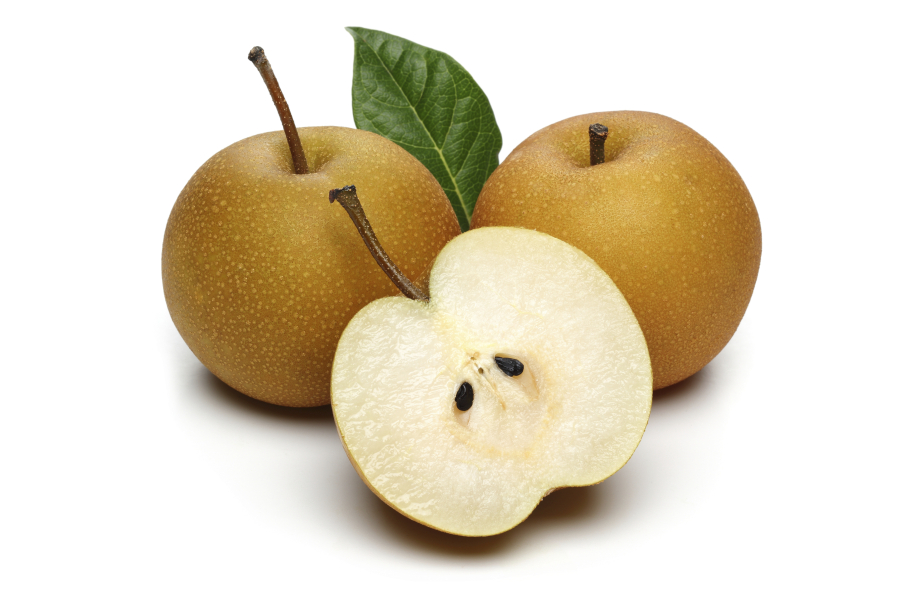Apple, Chinese, Japanese, Sand, Nashi — Asian pears go by many names! Their delightful, crunchy, sweet flavor makes them a cherished treat and favorite fruit with children. It has been said that 95 percent of them love this fruit upon first tasting. They are the most popular fruit in Asia, and their popularity is growing.
The Asian pear is the oldest member of the pear family, which originated in China more than 3,000 years ago. Introduced into United States during the 1850s Gold Rush by Japanese and Chinese immigrants, Asian pears were first cultivated in the foothills of the Sierra Nevada.
Asian pears should be crisp, crunchy, sweet and juicy. It’s a member of the pear family, but it feels more like you’re eating an apple. Japanese varieties tend to be “apple” shaped while Chinese varieties are “pear” shaped. The skin color can range from golden to pale green, with thicker and rougher skin than either apples or other pears. The interior flesh is white, aromatic and flavorful.
Select Asian pears that are firm, fragrant, and unblemished. Avoid fruit with any soft, brown, or damaged spots. Like apples and peaches, Asian pears need to ripen on the tree for prime quality. Its crisp texture does not change after harvest.
If not eating immediately, Asian pears will keep safely up to a week at room temperature or up to three months in the refrigerator.
When ready to eat, rinse the fruit in cool, running water and use your fingers and palm to gently rub dirt and debris not only from the skin surface but also the indent area around the stem. Peeling is not required.
Asian pears can be enjoyed as a snack or included in salads, stir fry and bread puddings. When cooked or baked, they retain a somewhat crunchy, grainy texture and are not typically favored for inclusion in pies or jams. Asian pears are interchangeable with Bosc pears, apples, or quince in recipes.
For yearround enjoyment, Asian pears can by frozen, dehydrated or water-bath canned. Always follow a recipe from a research tested source in order to protect your family’s health and safety.
Home-canned Asian pears require acidification to prevent botulism food poisoning (1 tablespoon bottled lemon juice per pint). With the addition of the bottled lemon juice, Asian pears can be safely canned as you would other pear varieties EXCEPT for purees or butters. At this time, there are no home canning recommendations available for Asian pear purees or butters.
For delicious Asian pear recipes and serving suggestions, check out Chef Scotty’s Market Fresh Recipes at ext100.wsu.edu/clark/?p=8163.
The WSU Extension website provides free, downloadable information and resources outlining safe and proven methods for Dehydrating (PNW 397), Canning Fruits (PNW 199), and Freezing Fruits (PNW 214) in addition to other Preservation and Food Safety topics that may be of interest.
Leigh Rosenberger is a Clark County WSU Extension Master Food Preserver. For additional recipes, food preservation, and food safety tips, visit ext100.wsu.edu/clark/?p=1134. Questions? Call MFP 360-397-6060 ext. 5366, or join Facebook Discussion Group “WSU Home Food Preservers – Clark County.”



